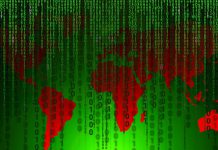Dit bericht verscheen eerder bij FOSSlife
Data analytics is a major force in the current zeitgeist. Analytics are the eyes and ears on a very wide variety of domains (society, climate, health, etc.) to perform an even wider variety of tasks (such as understanding commercial trends, the spread of COVID-19, and finding exoplanets). In this article, I will discuss some fundamentals of data analytics and show how to get started with analytics in Python. Finally, I will show the whole process at work on a simple data analytics problem.
A Primer on Data Analytics
Data analytics uses tools from statistics and computer science (CS), such as artificial intelligence (AI) and machine learning (ML), to extract information from collected data. The collected data is usually very complex and voluminous, and it cannot be interpreted easily (or at all) by humans. Therefore, the data on its own is useless. Information lies hidden within the data, and it takes many forms: repeating patterns, trends, classifications, or even predictive models. You can use this data to uncover insights and build knowledge of the problem you are studying. For example, suppose you wish to measure the traffic in a parking lot that is monitored by a network of IoT sensors covering the whole city. Reading a single occupancy sensor doesn’t say anything about the traffic on its own. Neither do the readings of all the parking sensors of the city without any more context. But the timestamped percentage of occupied places within the monitored parking lot does tell us something, and we use this information to derive insights, such as the times of day with maximum traffic.
Learning the mathematical background and analytics tools is only half the journey. Field expertise (experience on the problem that is being studied) is equally important. Some data scientists come from a statistics background, others are computer scientists who pick up the statistics as they go, and many are people starting from a field of expertise who need to learn both the statistics and the computing tools.
One important approach to data analytics is to use the Knowledge Discovery and Data Mining (KDD) model [1] – also known as Knowledge Discovery in Databases. The KDD process (see Figure 1) takes as input raw data from diverse sources (sensors, databases, logs, polls, etc.) and outputs information in the form of graphics, reports, and tables. The process has 5 steps:
- Selection – normally data sources are way more comprehensive than needed. Sensors might collect data from time periods or spatial locations that are out of the interest range or variables that are of no interest to the problem. This step narrows down the data that we know contains the information of interest. In the case of the parking example, we may only want to select data referring to the parking we want to monitor, as opposed to other parking spots throughout the city.
- Preprocessing – data is dirty; in other words, it may contain wrong or missing values caused by measurement errors or system failures. These errors can cause problems down the line, such as failures (in the best case) or hidden biases in the extracted information (in the worst case). Detecting wrong and missing data and filling it or dropping samples is part of the preprocessing stage. In the parking example, your might find null values when many parking sensors fail to send a reading or inconsistent values such as negative numbers.
- Transformation – once a clean dataset is in place, you might need to change its format to fit the requirements of the next stage. Tasks such as binning, converting from strings to numbers, obtaining parameters from images, etc. are just some of the thousands of possible actions in this stage. For the parking lot example, you might wish to do some binning, transforming the timestamp into a label representing an hour of a specific day.
- Data mining – this is the core of the whole KDD process. Data mining uses algorithms that extract the information from the clean, appropriately formatted data. Mining could consist of simple statistical computations (averages, standard deviations, and percentiles) or complex ML/AI processes (such as deep learning or unsupervised classification). In the parking lot example, I might wish to extract a time profile that represents the occupancy of the parking lot per hour. The process might be something like calculating the percent of occupied places per hour and day, and then averaging for several days at the same hour.
- Interpretation/evaluation – after you extract the necessary information, you still need one more step in which the results are validated before using the data to generate insights. Especially for complex outputs, such as predictive models, you need to evaluate the accuracy (normally with a separate validation dataset that was not used for the data mining process). Finally, you can use the information to generate insights or predictions. In the parking example, the resulting model could be used in a report that highlights the need for expanding the lot due to saturation at peak hours.
Dit bericht verscheen eerder bij FOSSlife













